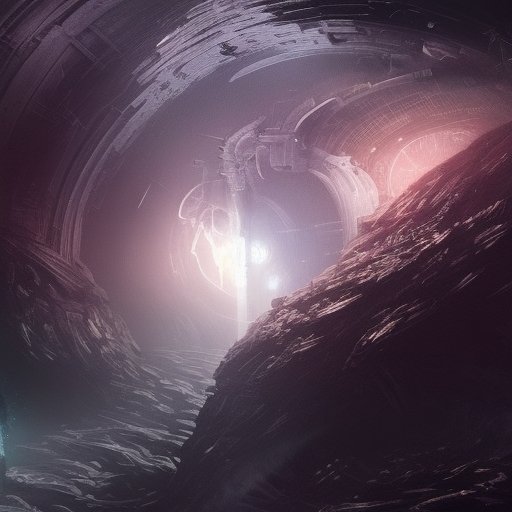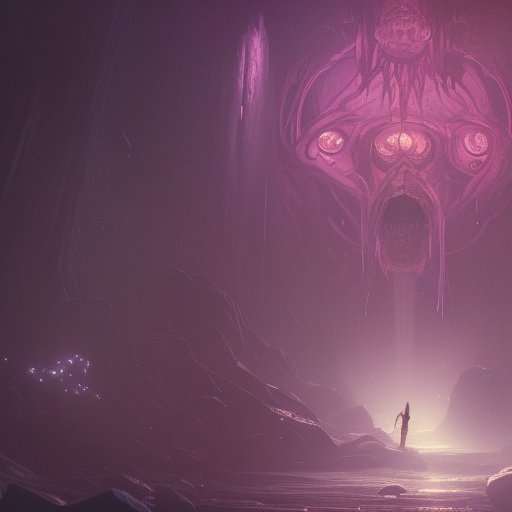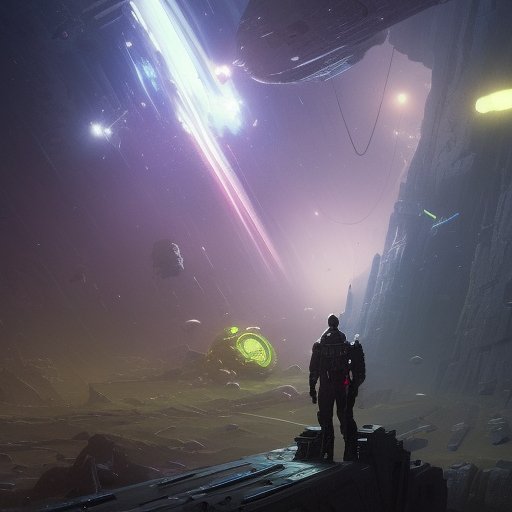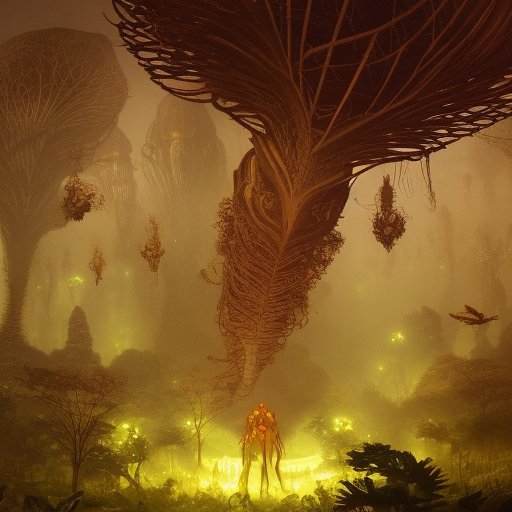
The Line between Black Holes and Worm Holes is a boundary of endless possibilities; a doorway to other dimensions, other times, other worlds. This article will explore the concepts of black holes and worm holes and the connections between them. Our journey will delve into the theoretical and scientific foundations, the challenges we face, and the potential for advancement in space and time travel. The Line between Black Holes and Worm Holes is a mysterious and exciting topic, and through this article, we hope to spark the imagination and inspire the next generation of space explorers.
I. Introduction
Ah, the great unknown. The vast expanse of space is an enigma, filled with countless secrets yet to be unraveled. Among these celestial mysteries is a fascinating line that has captured the imagination of humans for centuries: the line between black holes and wormholes.
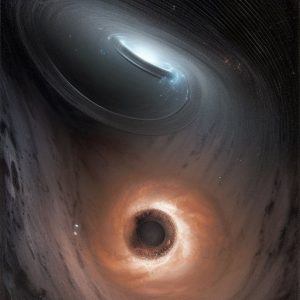
As we look to the stars, we can’t help but wonder what lies beyond the horizon. What otherworldly phenomenon are out there, waiting to be discovered and explored? To many science fiction writers, black holes and wormholes are the gateway to a universe of possibilities.
Black holes have long been a staple in science fiction, mysterious, invisible monsters that can suck up entire planets in an instant with their unfathomable gravity. But in reality, black holes are a place where the laws of physics as we know them break down. They’re so dense that nothing, not even light, can escape their grasp.
Wormholes, on the other hand, are theoretical tunnels through space-time that could act as a shortcut through the universe. They are postulated to exist as a consequence of the theory of general relativity. Einstein himself said that there may be a method of travel between two points in space and time that would involve a wormhole.
But what is the relationship between black holes and wormholes? Do they intersect on the same line? And what does that mean for the future of space travel and time travel?
As we explore the fascinating line between black holes and wormholes, we’re sure to uncover secrets and mysteries that have eluded us for centuries. So grab your space suit, buckle up, and get ready for an adventure beyond imagination!
II. What Are Black Holes and How Do They Work?
Black holes – the stuff of dreams and nightmares for many science fiction writers. These mysterious objects capture the imagination with the sheer force of their gravity. But what exactly are black holes, and how do they work? Let’s take a closer look.

Firstly, it’s important to understand that black holes are not holes at all. They’re actually incredibly dense objects. A black hole forms when a massive star dies, collapsing in on itself and creating a point of infinite density known as the singularity.
But what happens next is what makes black holes truly remarkable. The object’s gravity becomes so strong that nothing, not even light, can escape its pull. This is known as the event horizon, the point of no return.
As matter approaches the event horizon, it is ripped apart and pulled towards the singularity at the center. The end result is a swirling vortex of gas and dust, known as the accretion disk, that can be seen from great distances.
Black holes are classified by their mass. Stellar black holes are created when a star between 10 and 20 times the mass of our sun dies, while supermassive black holes can be billions of times more massive and are thought to exist at the center of most galaxies.
So, how do they “work”? Black holes are governed by the laws of gravity, but our understanding of physics breaks down once we reach the singularity. As far as we know, the singularity is a point of infinite density and infinite gravity.
III. What Are Worm Holes and How Do They Work?
Wormholes are like secret tunnels through space and time, whispered about in hushed tones by scientists and science fiction writers alike. But what exactly are they, and how could they be used to traverse the universe?
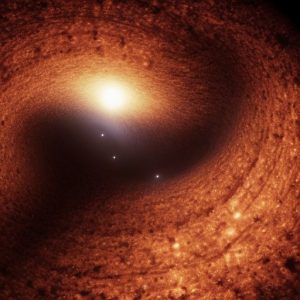
First off, a wormhole is a hypothetical shortcut through the fabric of space-time that connects two separate points in the universe. Think of it like a subway tunnel that goes through the earth, connecting two cities on opposite sides of the globe.
This shortcut through space-time is a consequence of Einstein’s theory of general relativity, which describes how gravity curves space and time. Wormholes are essentially a distortion of this fabric of space and time.
But how do these wormholes work exactly? To understand that, we need to look at how space-time is constructed. Imagine a sheet of paper, with two dots on opposite ends. In order to get from one dot to the other, you need to travel across the surface of the paper. But if you instead fold the paper, bringing the two dots close together, you can simply punch through the paper to get from one dot to the other.
A wormhole is like that folded piece of paper, creating a shortcut between two distant points in space and time. But getting through a wormhole is a bit more complicated than just punching through a piece of paper. Scientists theorize that you would need to use exotic matter to stabilize the throat of the wormhole so that it doesn’t collapse in on itself.
So while wormholes may be a fascinating concept, the technology required to make use of them is still far beyond our current capabilities. But who knows what wonders the future holds? Maybe one day we will discover the secrets of exotic matter, and be able to travel through the vast expanse of space and time with ease.
IV. The Theoretical Connection between Black Holes and Worm Holes
What if black holes and wormholes were linked like two sides of a coin? It’s a theoretical possibility that has long tantalized scientists and science fiction writers alike.
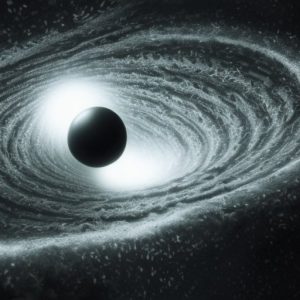
According to some theories, black holes and wormholes might be the same thing at their core. They’re both areas where the fabric of space-time is so warped that it bends in on itself, creating a singularity.
From the outside, black holes appear to be an abyss that swallows everything in its vicinity. But if you were to travel inside the black hole, you may end up in a different universe or a different time.
Wormholes, on the other hand, are gateways that connect different points in space-time, as if they were two different portals. Traveling through a wormhole could be just like taking a shortcut from one place to another in the same universe.
So what’s the connection between them? Some physicists suggest that black holes could be a type of wormhole, a bridge between two different points in space-time. They could be the entrance and the exit to another universe, or to another point in time.
Others argue that wormholes are a long shot and that black holes are more likely to be dead ends, leading to nothing but the ultimate demise of all matter and energy in the universe.
The jury is still out on the theoretical connection between black holes and wormholes. But one thing is clear: we’re inching closer and closer to discovering the secrets of these mysterious phenomena. With new technology and theoretical breakthroughs, we may soon find out if there really is a line connecting black holes and wormholes, and what that means for the ultimate fate of our universe.
V. The Importance of Finding the Line between Black Holes and Worm Holes
The line between black holes and wormholes may hold the key to unlocking the mysteries of the universe. It could be the missing link that connects us to other worlds, where life as we know it is just the beginning.
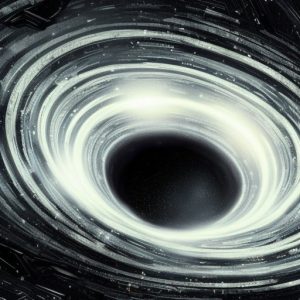
The importance of finding this line cannot be overstated. It could mean the difference between life and death for future space travelers. By understanding how black holes and wormholes work, scientists may be able to develop technologies to navigate safely through space and time.
Moreover, finding the line could bring us closer to discovering new planets and even other civilizations. It could give us a better understanding of the origins of the universe and the nature of existence itself. Who knows what kind of wonders we might find beyond the line?
The potential for advancements in science and technology is limitless. The line could lead us to new frontiers and usher in a new era of discovery and exploration. It could inspire generations of scientists and astronauts to embark on a quest for knowledge that spans the cosmos.
But finding the line won’t be easy. It will require dedication, creativity, and ingenuity. It will take years of research and experimentation, as well as breakthroughs in technology and theoretical physics. But the rewards could be immeasurable, and the possibilities of what we might find beyond the line are endless.
So let us embark on this quest to find the line, to unlock the secrets of the universe, and to explore the wonders beyond. Let us push the boundaries of human knowledge and imagination, and let us never stop searching for the answers to the mysteries of the cosmos.
VI. Challenges in Finding the Line
As enticing as the line between black holes and wormholes may be, it’s not an easy path to traverse. The challenges facing those who dare to tread this line are both technological and theoretical.
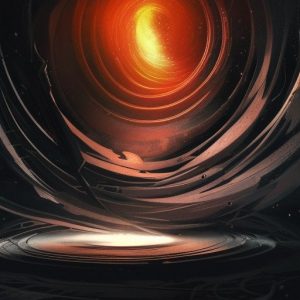
Firstly, the technology required to detect and study black holes and wormholes is incredibly complex. These enigmatic phenomena exist in the vast expanse of space that is beyond our reach, making the task of finding them incredibly difficult. Even detecting the effects of a black hole or wormhole can be challenging, as they are invisible to the human eye.
Theoretical challenges also plague our understanding of black holes and wormholes. Both phenomena exist at the strange intersection of quantum mechanics and general relativity, two theories that have yet to be fully reconciled. This makes it difficult to develop a comprehensive understanding of the behavior of these objects.
Moreover, the nature of black holes and wormholes, makes it challenging to predict their existence with precision. While theoretical calculations suggest the possibility of the existence of these enigmatic phenomena, the solutions are highly dependent on the underlying assumptions made. Further, it’s impossible to perform experimental verification on these assumptions due to the highly volatile and unstable nature of black holes and wormholes.
Despite these challenges, the quest to understand and explore the line between black holes and wormholes continues. Technological advancements are making it easier to detect and study these phenomena, while theoretical breakthroughs are pushing our understanding of the universe as we know it. As we continue to push the boundaries of what we know, who knows what mysteries this line could hold?
VII. The Potential of the Line
Imagine a world without limits. A universe where space and time are no longer barriers but mere obstacles waiting to be overcome. Such a world may be within reach with advancements in space travel and time travel, all thanks to the incredible line between black holes and wormholes.
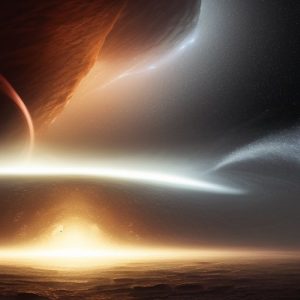
One of the most promising areas of development is interstellar travel. With wormholes, we could travel distances that once took centuries in mere moments. But the technological challenges are immense. Stringent energy requirements and the stability of the wormhole itself are just two examples.
Yet, if we can overcome these challenges, we could step into the future of space travel. Exploring distant galaxies and venturing where no one has gone before. It may sound like science fiction, but it could one day be our reality.
And what about time travel? Could the line between black holes and wormholes be the key to unlocking the secrets of time itself? The idea of traveling through time has captured the imaginations of writers and scientists alike for centuries.
While we’re not quite at a DeLorean level yet, the line between black holes and wormholes may be the key to unlocking time travel. By taking advantage of the intense gravitational forces that are present within black holes, we might be able to bend the fabric of space-time in ways that were once purely theoretical.
In other words, we might be able to travel not just through space, but through time itself. But this potential comes with great risks as well. The possibility of paradoxes and the ethical considerations of changing history pose significant problems.
As we continue to explore the line between black holes and wormholes, we’re sure to uncover more tantalizing secrets that shed light on the mysteries of space and time. It’s a field ripe with potential and one that promises to shape the future of humanity beyond anything we can currently conceive.
VIII. Conclusion
And so, the line between black holes and wormholes beckons us, teasing us with its promises of exploration and innovation. The endless possibilities that lie beyond are nearly unfathomable – new worlds to conquer, new civilizations to discover, and new technologies to develop. The mysteries of the universe are waiting to be solved, and the line between black holes and wormholes may very well be the key to all of it.
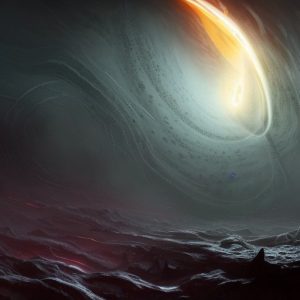
As we continue our quest to unlock the secrets of the cosmos, we must not forget the importance of curiosity and imagination. It is these qualities that have led humans to explore the depths of the ocean, climb the highest peaks, and journey beyond our own planet. With the line between black holes and wormholes, we have the opportunity to take that exploration to new heights, to push the boundaries of what we know and what we think is possible.
Of course, there will be challenges along the way – technological, theoretical, and beyond – but it is these challenges that make the journey worthwhile. Just as we have conquered so many obstacles in the past, so too can we conquer the line between black holes and wormholes. New discoveries are waiting just beyond the event horizon, and it is up to us to take that final leap into the unknown.
So let us grasp our tools of science and exploration – our telescopes, our spaceships, and our imaginations – and delve deep into the universe. Who knows what wonders await us on the other side of the line between black holes and wormholes? The possibilities are endless, and the journey is just beginning.
